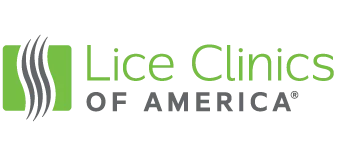Mom Returns to Work and Finds Passion for Helping Others Beat Head Lice
An unexpected meeting at a networking conference led to a conversation with a future business partner and spun Stephanie Knecht’s life in a completely new direction.
The mom of two had left a successful career running 15 cell phone stores in New York to raise her children, and she was looking for new opportunities now that the kids were in school.
“I met Greg Eisen at a networking event, and he told me he was building a great business treating head lice,” Stephanie said.
“I said, ‘What?’ I’ve never heard of such a thing.”
That was almost three years ago, and since then the team has built a network of four Lice Clinics of America® treatment centers in Connecticut and New York. Lice Clinics of America is the exclusive provider of a treatment using the FDA-cleared AirAllé® medical device, clinically shown to kill live lice and more than 99 percent of eggs (nits) in an hour using carefully applied heated air.
“I absolutely love it,” Stephanie said. “I loved my wireless business too, but this is so much more rewarding because we’re genuinely helping people. Parents come to the clinic stressed-out and frightened, and an hour later they are thanking and hugging us.”
She tells the story of her neighbor that called at 9:00pm one night, afraid that her son had head lice. “She came over and had two lice on a piece of scotch tape,” Stephanie said. “We treated her son in the morning, and she was so happy she gave me a case of wine!”
Stephanie spends much of her time educating communities about head lice. “We try to reach everyone that might come into contact with head lice, from pediatricians to teachers to hair stylists,” she said. “There is so much confusion and misinformation, even in the medical community.”
That’s because many people still don’t understand that the most popular treatments for head lice are no longer effective because lice have become immune to the pesticides found in those products. A 2016 study in the Journal of Medical Entomology found that 98 percent of head lice in the U.S. have developed a genetic resistance to pyrethroids, the active ingredient in over-the-counter lice shampoos. Pyrethroids have also been linked to developmental and behavioral issues with children.
“Time after time we see people treating children 4-5 times with dangerous pesticides that don’t work before they come to us,” Stephanie said. “When they learn they can be lice-free in an hour they are overjoyed.”
Stephanie and her team try to get people to the clinics before they waste time and money on treatments that don’t work. “Our mission is to ‘educate and elevate,’” she said. “We hold ‘lunch and learn’ sessions at medical practices, beauty schools, and with school nurses to teach them about our protocols and treatment options. They generally start referring people to our clinics.”
The clinics also facilitate parent-to-parent alerts with anonymous postcards that they send in behalf of their clients. This allows families to know when their children have been exposed to head lice. “Parents don’t want to tell other parents that their child has head lice, so we send postcards from the clinic to other parents letting them know that we’ve treated someone—usually a classmate or day care attendee—and that others in the school or center have been exposed to head lice. We also offer a free screening,” Stephanie said. “This helps parents to communicate without it becoming personal, and it brings more people to our clinics.”
“Everyone loves what we do,” Stephanie said. “They just don’t know about us and our methodology. No one wants to talk about head lice until they have to. By initiating the conversation, we can inform and educate, which allows them to deal with head lice faster and more safely than they realized was possible.”
“I never imagined I would be in the head lice business,” Stephanie said, “let alone love it as much as I do. No business is easy, but this one is easy to love.”






